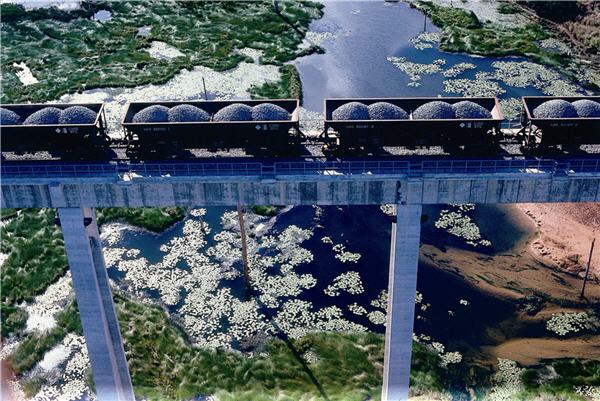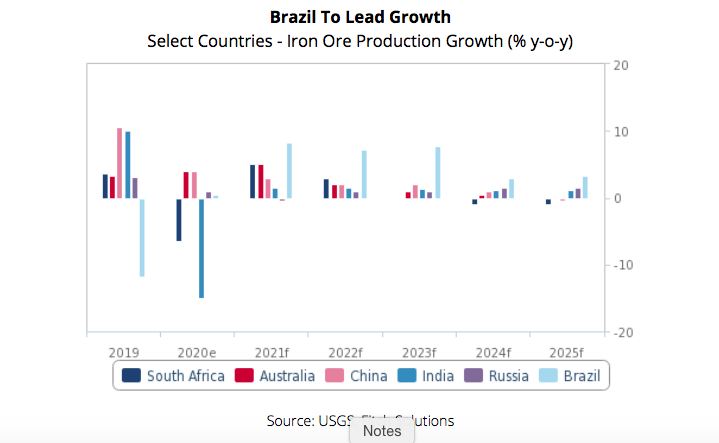
Global iron ore mine output growth will average 2.4% over 2021-2025 compared to -2.0% over the previous five years, highlights a new report by market researcher Fitch Solutions.
This would lift annual production by 378 million tonnes in 2025 compared to 2020 levels, roughly the equivalent of India and Russia’s combined 2020 output.
According to Fitch, supply growth will be primarily driven by Brazil and Australia.
“In China, we expect annual output levels to stabilise after a dramatic decline in recent years, which will reduce the drag that China has on global output levels,” Fitch says.
“Nonetheless, as China’s miners operate at the higher end of the iron ore cost curve and domestic ore grades will continue to decline, we expect Chinese firms to prioritise investment in overseas iron ore mines, such as the enormous SImandou deposit in Guinea.”
Looking beyond 2025, Fitch expects that lower prices will eventually drag on production growth rates. It forecast annual production growth to average just 0.4% over 2026-2030, with output levels stagnating by the end of the decade.
Iron ore prices climbed back on Monday as China’s steel output hit a record high despite the government’s pledge to curb annual production to reduce pollution and increase costs from raw materials.
Benchmark 62% Fe fines imported into Northern China (CFR Qingdao) were changing hands for $217.77 a tonne, up 4.3%, according to Fastmarkets MB.

Brazil’s iron ore production growth will rebound in the coming years following contraction over 2018-2020, Fitch says.
Low operating costs, a solid project pipeline and Brazil’s high-quality iron ore increasingly favoured by
Chinese steel producers will all contribute to higher output, according to the market researcher.
“We forecast Brazil’s iron ore production to increase at annual average rate of 5.9% over 2021 to increase from 391 million tonnes in 2020 to 529 million tonnes in 2025,”
Fitch forecasts iron ore production in Australia to grow at an annual average of 1.7% over 2021-2025.
“While significantly slower than 3.4% over the previous five years, this would still lift annual output by 84 million tonnes compared to 2020 levels by 2025.”
(Read the full report here)